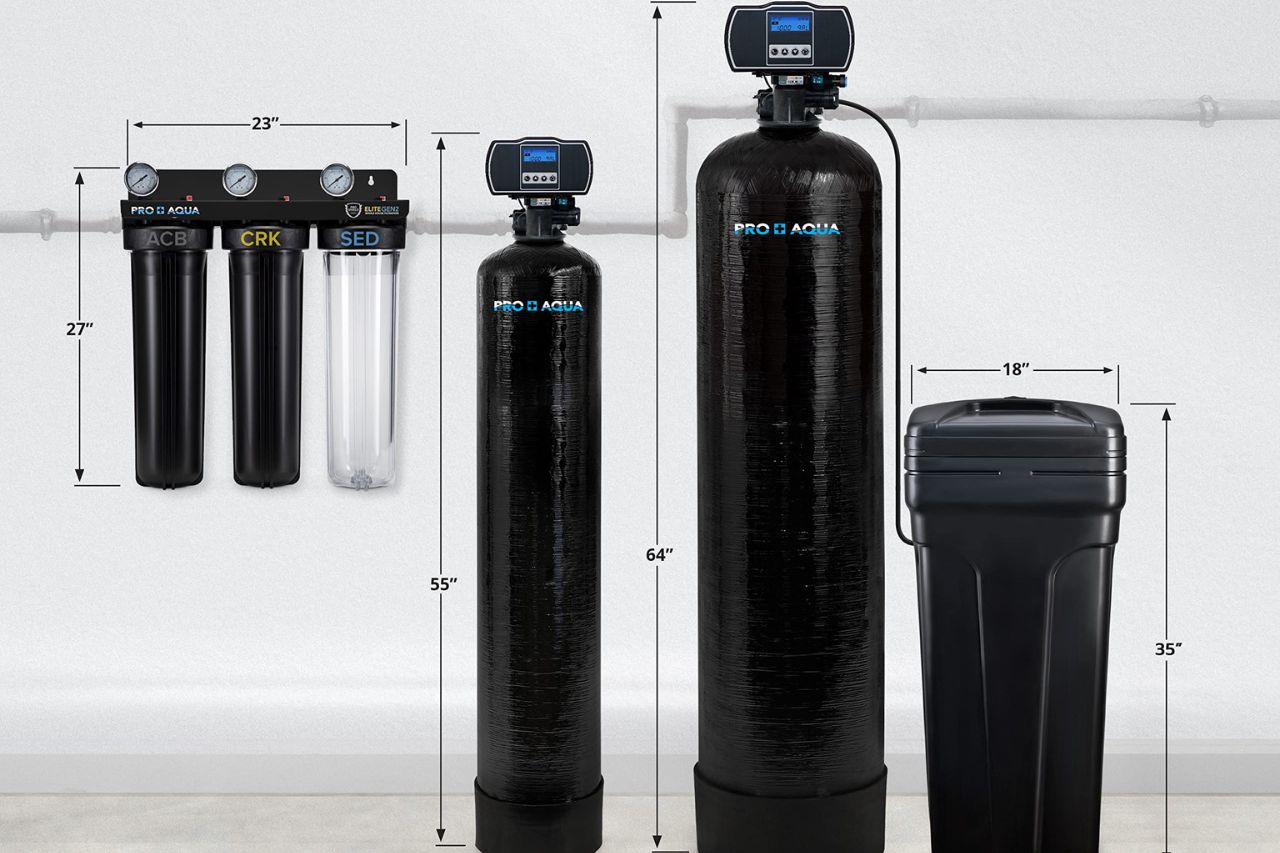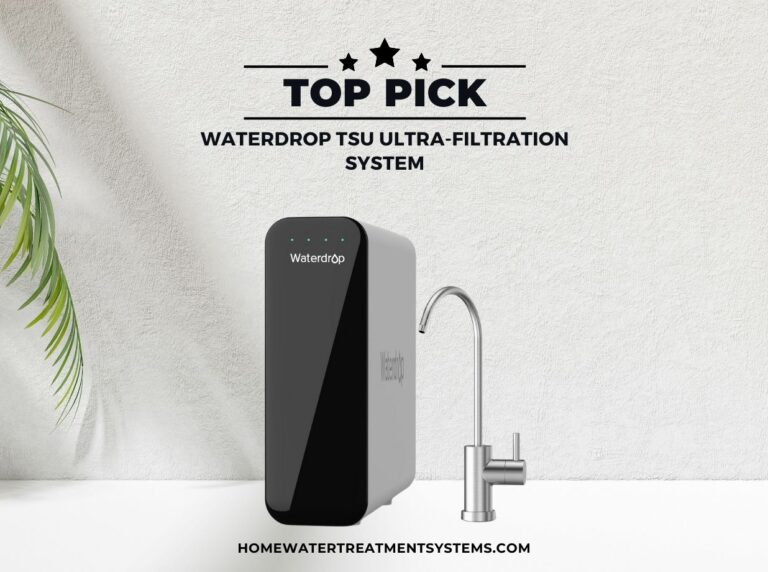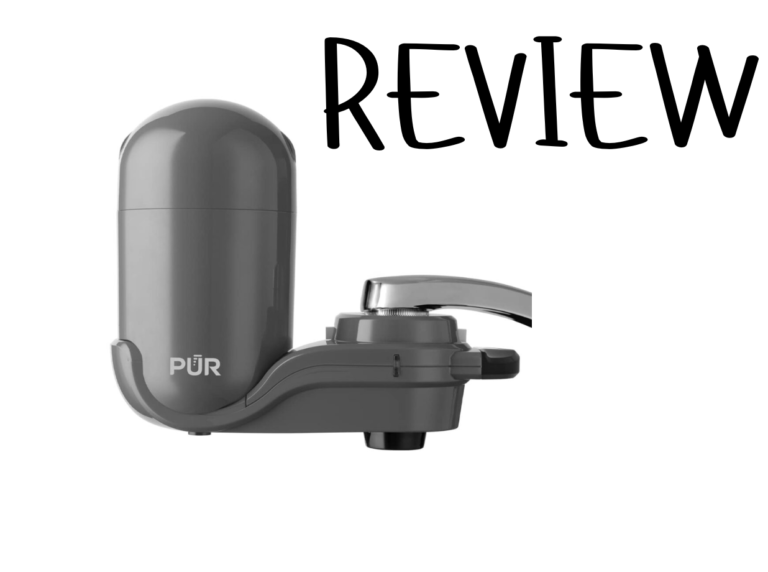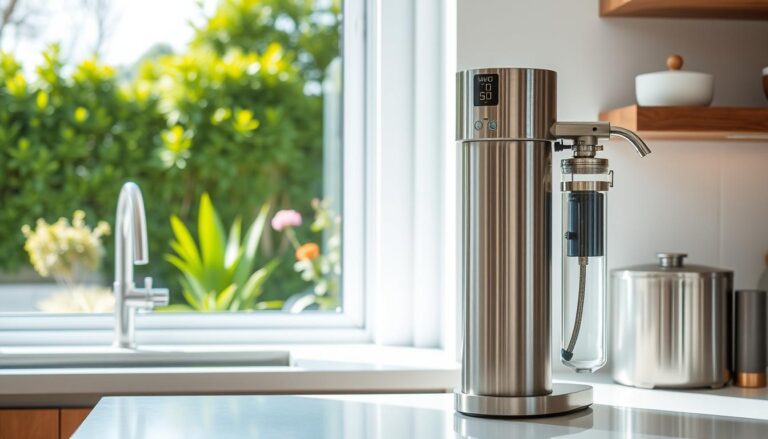Multi-Stage Filtration Systems vs Single-Stage Filters
How Multi-Stage Filtration Systems Work
Multi-stage filtration systems utilize a series of filtration processes, each designed to target specific types of contaminants. These systems often consist of multiple filters, resulting in a more thorough purification compared to single-stage filters.
Typically, a multi-stage filtration system begins with a sediment filter, such as a multi-gradient depth polypropylene sediment filter. This initial stage is crucial for capturing larger particles like dirt, sand, and rust. By removing these contaminants early on, the system prevents clogging and extends the life of the subsequent filters.
The second stage usually involves a carbon filter. Radial flow carbon filters are commonly used for this purpose, efficiently removing chlorine, bad tastes, and odors. Carbon filtration is particularly effective in eliminating chemical contaminants, ensuring safer and better-tasting water.
In advanced systems, additional stages may include granular activated carbon (GAC) filters, reverse osmosis membranes, or UV sterilization. These stages further enhance the removal of microscopic contaminants, such as bacteria, viruses, and dissolved solids.
Multi-stage filtration systems can remove up to 99% of contaminants Multi-stage systems can improve water taste and odor by 90%
Benefits of Multi-Stage Filtration Systems
Multi-stage filtration systems provide several key benefits that make them an attractive choice for home water treatment:
- Comprehensive Contaminant Removal: By incorporating multiple types of filters, these systems can effectively reduce a wide range of contaminants, including sediment, chlorine, dirt, and other harmful particles. For instance, the Home Master HMF2SdgC combines a multi-gradient depth polypropylene sediment filter with a radial flow carbon filter for thorough purification.
- Enhanced Water Quality: The sequential filtering process ensures that each stage targets specific impurities, resulting in water that is not only safer to drink but also tastes and smells better. Systems like the HomeWater 4-Stage Reverse Osmosis Filter achieve high levels of purity, producing clean water stored in a sealed tank to prevent recontamination.
- Longer Filter Life: Multi-stage systems often feature pre-filters that capture larger particles, thereby extending the lifespan of the primary filters. This reduces the frequency of replacements and maintenance costs, exemplified by the durable components of Water Pure Technologies’ 2-Stage Water Filtration System.
- Optimal Water Pressure: Advanced designs with oversized filters and housings, such as those in the Home Master HMF2SdgC, help maintain strong water pressure throughout the filtration process. This prevents any significant drop in water flow, ensuring consistent performance for all household needs.
- Customization and Flexibility: Many multi-stage systems allow for the addition or replacement of specific filter types based on the contaminants present in the local water supply. This adaptability ensures that users can tailor their filtration setup to best meet their needs.
Overall, the layered approach of multi-stage filtration systems provides a robust solution to address various water quality issues, making them an excellent investment for health-conscious homeowners seeking long-term water treatment solutions.
Drawbacks of Single-Stage Filters
Additionally, single-stage filters can struggle to maintain adequate water pressure, especially in households with high water demand. The limited size and capacity of these filters mean they can quickly become clogged with contaminants, resulting in decreased efficiency over time.
Another significant drawback is the limited range of contaminants they can remove. Single-stage filters often rely on a single type of filtering material, such as activated carbon, which might be effective against chlorine and certain organic compounds but less effective against other pollutants like heavy metals, bacteria, and sediments. This singular approach can leave many harmful substances in the water, posing potential health risks.
- Frequent Maintenance: Due to their limited capacity, single-stage filters require more frequent maintenance and replacements, which can increase both time and cost for the homeowner.
- Reduced Effectiveness: Over time, the filter media can become saturated, significantly reducing its ability to remove contaminants and negatively impacting water quality.
- Inadequate for Comprehensive Filtration: Relying on just one filtration method limits the system’s ability to address a broad spectrum of contaminants effectively.
Water Quality: Single-Stage vs. Multi-Stage Systems
When evaluating water quality in single-stage and multi-stage filtration systems, one must consider several factors, including the types of contaminants each system can effectively remove, the filter lifespan, and the clarity of the water produced.
Single-stage filters typically employ one type of filtering medium, usually activated carbon, which is effective at removing chlorine and some pesticides and herbicides. However, these filters might struggle with more complex contaminants like heavy metals, nitrates, and microbial cysts. As a result, while single-stage systems can improve taste and odor, they may not provide comprehensive water purification.
In contrast, multi-stage filtration systems are designed to address a wider array of contaminants through sequential layers of filtration media. For example, a popular multi-stage system might include:
- Stage 1: A sediment filter to remove large particles such as dirt and rust.
- Stage 2: A granular activated carbon filter to reduce chlorine, taste, and odors.
- Stage 3: A carbon block filter to target organic chemicals and further reduce chlorine.
- Stage 4: A final filter such as reverse osmosis or UV light to eliminate heavy metals and pathogens.
By incorporating multiple filtration stages, these systems ensure a more thorough removal of contaminants, resulting in higher quality drinking water. Multi-stage filters also typically have longer lifespans for each stage, as the workload is distributed across several filters rather than a single one bearing the full burden.
Households using multi-stage systems report a 30% reduction in waterborne illnesses
Cost Comparison: Multi-Stage vs. Single-Stage Filters
When evaluating costs, it’s important to consider both the initial investment and the long-term expenses associated with replacement filters and maintenance.
Multi-stage filtration systems generally have a higher upfront cost. For example, a high-quality, four-stage reverse osmosis system might cost several hundred dollars, compared to a basic single-stage sediment filter, which could be as low as $50. However, the initial outlay is not the sole factor to consider.
Operational cost over time is a significant aspect of this comparison. Multi-stage systems often feature longer filter life, with some like the Home Master HMF2SdgC offering approximately 125,000 gallons of filtration before needing replacement. This can lead to fewer replacements and potentially lower long-term expenses. Single-stage filters, on the other hand, typically require more frequent changes, possibly every few months, depending on the water quality.
Another financial consideration is maintenance. Multi-stage systems, especially those with reverse osmosis, may require professional installation and occasional maintenance check-ups, adding to the overall cost. Single-stage filters are usually simpler in design, requiring less specialized knowledge for both installation and upkeep, thereby reducing additional costs.
Single-stage filters are generally 20-30% cheaper upfront than multi-stage systems
Installation and Maintenance: What to Expect
Installation: Multi-stage filtration systems typically require professional installation due to their complexity. These systems often consist of multiple interconnected components, including oversized filters, housings, fittings, and sometimes a pre-filter. The complexity ensures optimal water pressure and efficient filtration across the entire household. Single-stage filters, on the other hand, are generally easier to install and can often be set up by a competent DIY enthusiast. They are usually more compact and require fewer connections, making the process straightforward and less time-consuming.
Maintenance: When it comes to maintenance, multi-stage systems generally offer longer filter life compared to single-stage filters. For instance, multi-stage filters can last up to approximately 125,000 gallons of water consumption, reducing the frequency of filter changes. This translates to less frequent maintenance, saving time and effort in the long run. Additionally, many high-end multi-stage systems include features that minimize manual upkeep, such as built-in pre-filters that capture particulates and reduce scale build-up without the need for monthly maintenance or salt pellets.
However, the complexity of multi-stage systems also means that when maintenance is required, it can be more involved. Replacing filters usually involves dealing with multiple components, which might necessitate professional help unless the homeowner is particularly handy. For those who prefer a hands-off approach, many companies offer LiveChat support to assist with troubleshooting and maintenance queries.
Warranty and Support: Another consideration is the warranty and support provided. Multi-stage systems often come with extended warranties, such as a two-year warranty, which offers added peace of mind. In contrast, single-stage filters might offer shorter warranty periods and less comprehensive customer support options.
Longevity and Durability of Filtration Systems
The longevity and durability of water filtration systems are pivotal considerations for homeowners looking to make a cost-effective and reliable investment. Multi-stage filtration systems generally exhibit superior durability and a longer filter life compared to their single-stage counterparts. For instance, some multi-stage systems, like the Water Pure Technologies 2 Stage Water Filtration System, boast extended lifespans, with certain filters offering a capacity of up to 125,000 gallons. This design not only ensures prolonged use but also means fewer replacements, translating to additional cost savings over time.
Furthermore, the use of oversized filters, housings, and fittings in multi-stage systems enhances water pressure and improves the overall effectiveness of the filtration process. These systems are engineered to handle higher volumes of water without compromising on performance, thereby increasing their longevity. For example, a 4-stage filtration system can reduce a wide array of contaminants, including sediment, dirt, chlorine, and other harmful substances, which ultimately leads to the prolonged health of the system itself.
In contrast, single-stage filters may require more frequent replacements due to their limited capacity. Typically, these systems offer a shorter filter life and may struggle to maintain optimal water pressure over time. Frequently changing filters not only incurs additional costs but can also become a burdensome maintenance task for the homeowner. A single-stage system, although often less expensive initially, might not provide the same long-term reliability and durability as a multi-stage system.
Environmental Impact of Different Filtration Systems

Understanding the environmental impact of water filtration systems is crucial for making informed choices. Multi-stage filtration systems, while effective, often involve more components, each contributing to the overall environmental footprint. These systems typically incorporate several filters, such as sediment filters, activated carbon filters, and sometimes more advanced stages like reverse osmosis or UV filtration. Each filter stage has its own lifecycle, which includes manufacturing, transportation, usage, and disposal. This process can lead to a higher cumulative environmental impact compared to single-stage systems, which usually involve fewer materials and resources.
However, the advanced technology in multi-stage systems also means they often have longer lifespans for individual filters. For instance, a high-quality multi-stage system can offer up to 125,000 gallons of filtered water before requiring filter replacement, reducing the frequency of disposals and the corresponding landfill burden. Moreover, the use of oversized filters and housings in some multi-stage systems ensures optimal water flow and efficiency, potentially offsetting the environmental cost through better performance and less waste.
In contrast, single-stage filters are generally simpler and may create less waste in terms of initial resources. Yet, they often require more frequent replacement due to their limited filtration capacity. This can result in a higher turnover of filter cartridges, increasing the volume of waste over time and potentially negating their lower initial environmental impact. Moreover, single-stage filters might not remove as many contaminants, leading some users to resort to additional plastic water bottles or other supplemental filtration methods, indirectly increasing environmental strain.
On the subject of waste, biodegradable or recyclable filter components are emerging as a solution, with some manufacturers experimenting with eco-friendly materials. Opting for a system that prioritizes sustainability in its design and disposal can mitigate some of the environmental concerns associated with both single and multi-stage systems. In conclusion, while multi-stage filtration systems may have a higher initial environmental impact due to their complexity, their potential for durability and efficiency can ultimately provide a more sustainable solution in the long run, highlighting the importance of considering both lifecycle and performance in environmental assessments.
Multi-stage filtration systems can remove up to 99% of contaminants
Conclusion: Choosing the Right Filtration System for Your Home
Choosing the right filtration system for your home ultimately depends on your specific needs and circumstances. A multi-stage filtration system is generally more effective at removing a wider range of contaminants, thanks to its layered approach which targets different types of impurities at each stage. For households concerned about issues like sediment, chlorine, and microscopic pollutants, a multi-stage system offers enhanced comprehensive protection and better overall water quality.
However, the complexity of multi-stage systems means they often come with higher initial costs and can require more intricate installation processes and maintenance routines. If your water source is relatively clean and you’re primarily dealing with one or two types of contaminants, a single-stage filter may suffice. These systems are typically more affordable and easier to manage, making them a practical choice for those with less stringent water quality needs.
Cost considerations are also a critical factor in your decision-making process. While multi-stage systems tend to have higher upfront costs, they may save money in the long run by prolonging the life of appliances, reducing the need for bottled water, and diminishing overall water quality issues. Conversely, single-stage systems are less expensive initially but may require more frequent filter replacements, potentially offsetting the lower upfront cost over time.
In terms of environmental impact, multi-stage systems can be more efficient, reducing plastic waste associated with bottled water and requiring fewer replacements over time. On the other hand, single-stage systems might involve less material and energy consumption initially, though they often need more frequent replacement parts.
Ultimately, the choice between a multi-stage and a single-stage filtration system should be informed by an assessment of your water quality, budget, environmental considerations, and maintenance preferences. By weighing these factors, homeowners can make a more educated decision that meets their specific needs and ensures they enjoy clean, safe water throughout their home.
Frequently Asked Questions:

Is it worth investing in a multi-stage filtration system for home use?
For homeowners weighing the pros and cons of water filtration systems, the decision ultimately hinges on several key factors: water quality, cost, maintenance, and specific household needs. Multi-stage filtration systems, while more expensive initially, offer extensive contaminant reduction, addressing not just sediments and chlorine but also impurities like heavy metals, pesticides, and microorganisms. This comprehensive filtration is especially beneficial for households with compromised local water sources or individuals having specific health concerns.
Water quality improvements: Multi-stage systems such as the Home Master HMF2SdgC 2-Stage or 4-Stage Reverse Osmosis models efficiently enhance water taste and purity. These systems are known to reduce a broader range of contaminants, providing safer and cleaner water. For homes relying on well water or older municipal systems, this additional layer of security can be invaluable.
Cost considerations: While the upfront investment for multi-stage systems is higher, their longer filter lifespan can offset long-term expenses. These systems, with oversized filters and efficient designs, necessitate less frequent replacements than their single-stage counterparts, indirectly saving costs over time. For example, HomeWater’s 4-Stage system features built-in pre-filters to extend the main filter’s life.
Ease of maintenance: Maintenance requirements should not be overlooked. Multi-stage systems generally require more attention, but modern advances are simplifying upkeep. Systems like the Home Master HMF2SdgC are designed for easy access and straightforward cartridge replacement, making regular maintenance feasible for most homeowners.
Application and suitability: For large households or those using water-intensive appliances, the benefits of multi-stage systems become more prominent. These systems not only improve water quality but also contribute to the longevity and efficiency of home appliances by reducing scale build-up, as highlighted in the HomeWater system’s features. This added efficiency can translate into lower energy and repair costs.
Therefore, while the initial investment in a multi-stage filtration system can be substantial, the combination of improved water quality, longer filter life, and enhanced appliance performance presents a compelling case for many homeowners. However, it remains crucial to assess individual water quality needs, budget constraints, and maintenance capabilities to determine the best filtration solution for your home.
Can single-stage filters handle high water flow rates?
Single-stage filters can handle varying water flow rates, but their performance largely depends on the specific design and capacity of the filter. Typically, these filters are designed for moderate water flow applications. While some high-quality single-stage filters, such as those with oversized housings and fittings, can handle flow rates up to 10 gallons per minute, they may not be as effective in maintaining optimal pressure and thorough filtration as their multi-stage counterparts.
One significant drawback of single-stage filters in high-flow scenarios is their limited capacity to filter out diverse contaminants efficiently. Most single-stage systems focus on a specific type of contaminant, such as chlorine or sediment, which means they cannot provide the comprehensive purification offered by multi-stage systems. As the water flow rate increases, the contact time with the filter media decreases, potentially reducing the filter’s effectiveness in contaminant removal.
Moreover, single-stage filters may face more frequent clogging and require more maintenance when subjected to high water demands. In contrast, multi-stage systems distribute the filtration workload across several stages, enhancing their ability to maintain higher flow rates without compromising water quality. Ultimately, while single-stage filters can handle high water flow rates to some extent, they are generally less efficient and durable compared to multi-stage systems in such applications.
Can multi-stage filtration systems be used in both residential and commercial settings?
Yes, multi-stage filtration systems can be employed in both residential and commercial settings due to their versatile design and robust filtration capabilities. These systems are highly adaptable, catering to the specific needs of a variety of environments. Whether it’s for a household aiming to improve the taste and safety of drinking water or a commercial establishment needing to adhere to stringent water quality standards, multi-stage systems provide comprehensive solutions.
For residential use, multi-stage filtration systems are preferred for their thorough contaminant removal, enhancing the overall water quality for daily usage. They are capable of filtering out sediment, chlorine, chloramine, heavy metals, and even bacterial contaminants, ensuring that the water is safe for all household activities, including cooking, drinking, and bathing.
In commercial settings, the stakes are often higher due to the volume of water usage and the need for consistent water quality across different applications. Multi-stage systems excel in this scenario by providing high-capacity filtration, maintaining optimal pressure, and requiring minimal maintenance. This is particularly beneficial for businesses in the food and beverage industry, healthcare facilities, and other sectors where water quality directly impacts operational outcomes and regulatory compliance.
The scalability of these systems also plays a crucial role in their dual applicability. They can be customized with specific filter stages to address unique water quality issues, from basic sediment and chlorine removal to advanced filtration like reverse osmosis systems that target microscopic contaminants. Brands such as the Home Master HMF2SdgC and other 4-stage systems offer configurations that can be fine-tuned for both small residential settings and large commercial operations.
In conclusion, multi-stage filtration systems are a versatile and effective solution for both residential and commercial usage, providing reliable and high-quality water filtration tailored to diverse requirements and settings.
Can multi-stage water filters remove chlorine and heavy metals?
Yes, multi-stage water filters are highly effective at removing chlorine and heavy metals from drinking water. The multiple stages of filtration often include various types of filters such as activated carbon, reverse osmosis membranes, and sediment filters, each designed to target specific contaminants. For example, activated carbon filters are particularly adept at removing chlorine, which not only improves the taste and odor of the water but also reduces potential health risks associated with long-term exposure.
When it comes to heavy metals like lead, mercury, and arsenic, multi-stage systems generally include specialized filters like reverse osmosis membranes or ion exchange resins. Reverse osmosis is known for its ability to filter out even the smallest particles, making it one of the most effective methods for removing heavy metals. Additionally, some systems incorporate a secondary filtration stage, such as ion exchange, which replaces harmful metal ions with more benign ions like sodium or potassium.
These comprehensive filtration mechanisms ensure that the water coming out of a multi-stage system is significantly purer and safer. The process not only removes contaminants but also addresses a broader spectrum of potential water quality issues, providing peace of mind to homeowners who are concerned about their water supply.
Overall, the efficacy of multi-stage filtration systems in removing chlorine and heavy metals makes them a valuable investment for households aiming for high-quality drinking water. Their ability to handle a wide array of contaminants sets them apart from single-stage filters, which might not offer the same level of protection or taste improvement.







